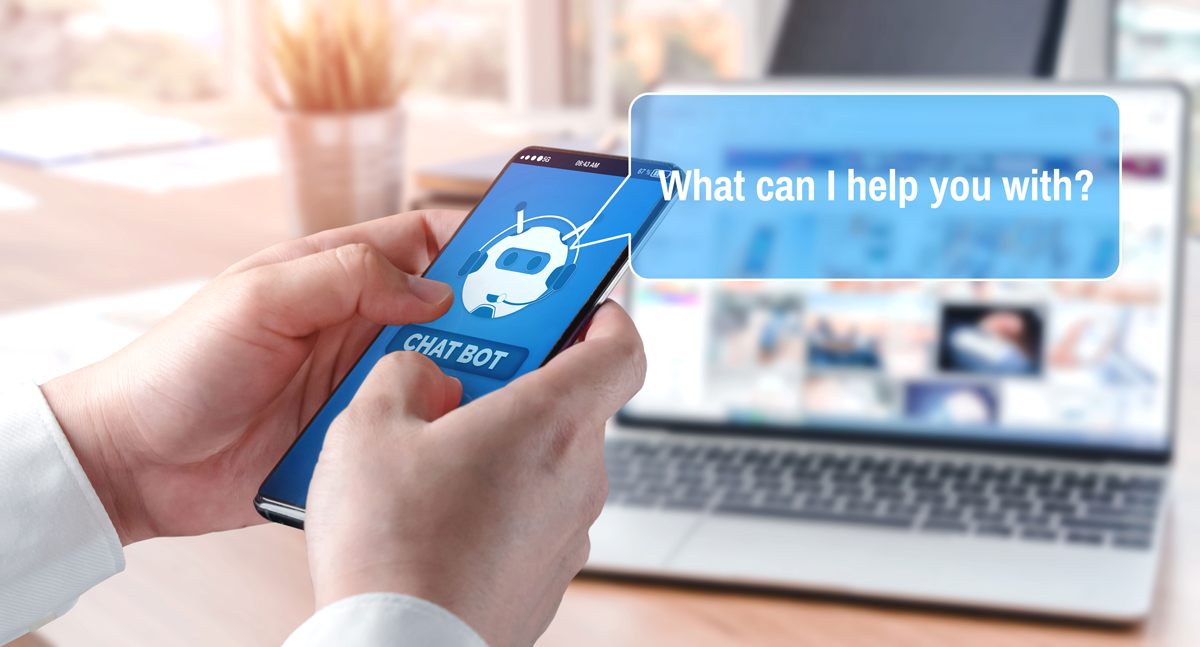Online Engagement Marketing: What You Need To Know
As a marketer, you’re familiar with the term “engagement marketing,” often called “experiential marketing” or “participation marketing.” It is an approach that directly engages consumers along a brand experience in hopes to increase brand perception and better influence purchase decisions. Sounds idyllic, right? Many marketers, however, find that the concept has many channel differences and technology nuances, and it is often confusing to implement. In this post, we hope to clarify the meaning, and provide some insights and suggestions on implementing engagement marketing.
Clarity on the Definition
Wikipedia states that “Experiential (engagement) marketing is a growing trend which involves marketing a product or a service through custom memorable experiences that engage the customers and create emotional attachment to the product/service. Physical and interactive experiences are used to reinforce the offer of a product and make customers feel as if they are part of them.”
For simplicity sake, let’s continue that thought through the lens of online engagement marketing…
Online Engagement Marketing
“Online engagement marketing” is a broad term. It can encompass any online marketing activity that allows for consumer interaction. This can range from digital ads and social media, to 1-to-1 personalized communications via a mobile app. The differences between them can be viewed by their means of engagement and measurement of that engagement. For instance, online display advertising has the ability to measure both positive and negative actions. Positive actions involve click-throughs or calls, whereas negative actions involve skipping or closing the ad. Social media provides deeper interactions such as clicks, likes, shares, follows, recommendations, and comments. These interactions are proven to increase brand acceptance and conversion rates down the funnel. Personalized 1-to-1 communications such as text messages, emails, and chats are the most engaging but are the toughest to measure because they involve looking at the specific content in messages.
Regardless of the channel, be sure to look at how the engagement is measured. It may determine the approach you take. That said, an omni-channel approach using all channels is almost always the best course of action.
Let’s take a closer look at some examples of online engagement marketing…
Social Media – some of the best ways to create engagement simply because the platforms are designed around it. Providing links to your business social media sites are expected in today’s digital environment. Customers look to the links as a means to provide feedback and make inquiries. This is particularly valuable for multi-location brick-and-mortar brands where social media allows the customer to interact with the specific location(s) they visit. Users can ask about hours of operation, items in stock, directions, etc.
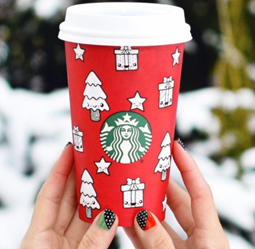 Outbound social media campaigns are quite effective as well in helping move the brand perception needle. They can take on many forms – from ads, quizzes, contests and surveys, to games and questionnaires. Starbucks provided an example of an effective social media campaign with their RedCupArt Challenge where customers were encouraged to decorate their coffee cups and share them on Twitter and Instagram using the hashtag #RedCupArt. The winners got their designs placed on Starbucks cups during the holiday season. What a great way for Starbucks to show they care about their customers.
Outbound social media campaigns are quite effective as well in helping move the brand perception needle. They can take on many forms – from ads, quizzes, contests and surveys, to games and questionnaires. Starbucks provided an example of an effective social media campaign with their RedCupArt Challenge where customers were encouraged to decorate their coffee cups and share them on Twitter and Instagram using the hashtag #RedCupArt. The winners got their designs placed on Starbucks cups during the holiday season. What a great way for Starbucks to show they care about their customers.
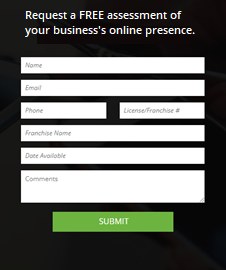 Push Notifications – notifications that consumers and customers “opted in” to receive from a brand. The intent is to entice the user to respond to an offer, request more information, set an appointment, or otherwise engage with the brand. The challenge is pushing the right content to the right audience at the right time, without overdoing it. Business of Apps states that “The average US smartphone user receives 46 app push notifications per day,” so it’s important to use them in moderation. Enrolling customers in an opt-in newsletter is another push marketing tactic. It keeps your brand and informational content in the minds of consumers so they feel connected and think of you when they are ready to buy.
Push Notifications – notifications that consumers and customers “opted in” to receive from a brand. The intent is to entice the user to respond to an offer, request more information, set an appointment, or otherwise engage with the brand. The challenge is pushing the right content to the right audience at the right time, without overdoing it. Business of Apps states that “The average US smartphone user receives 46 app push notifications per day,” so it’s important to use them in moderation. Enrolling customers in an opt-in newsletter is another push marketing tactic. It keeps your brand and informational content in the minds of consumers so they feel connected and think of you when they are ready to buy.
Request for Feedback – typically a pop-up that follows a customer interaction requesting feedback on the experience. This tool allows you to get valuable insights into customer perspectives so that you can perfect it over time. Whether you want to ask about a customer’s recent purchase experience or inquire about their future needs, the Request for Feedback too is a must. And it doesn’t hurt to ask the customer to like, share, or send recommendations to others. Quite often, customers will do so simply because you suggested it.
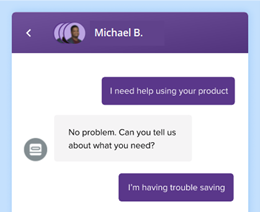 Chatbots – machine-driven replies based on artificial intelligence and natural language processing. Machines can understand queries and respond to them just as we do. Chatbots are particularly useful when you don’t have the time or staff to respond to queries right away. Most people realize they are talking to a machine, but don’t really mind as long as their query gets answered or sent for follow up. Chatbots can be “always on” and can save time for both the customer and the business.
Chatbots – machine-driven replies based on artificial intelligence and natural language processing. Machines can understand queries and respond to them just as we do. Chatbots are particularly useful when you don’t have the time or staff to respond to queries right away. Most people realize they are talking to a machine, but don’t really mind as long as their query gets answered or sent for follow up. Chatbots can be “always on” and can save time for both the customer and the business.
Personalized Communications – can often simply involve adding your customer name to the communications. This includes 1-to-1 emails, texts or chats you send to customers, or those sent via an automated process such as “Thank You for Your Order, John.” Personalizing the message captures attention and helps the customer feel more appreciated. Including personalized content adds to the effectiveness. Depending on your products/services, you should consider adding content such as purchase history, order status, shipping status, etc.
Loyalty Programs – perhaps the most responsive of engagement programs. They track purchases by individuals and provide rewards, discounts, and special offers to repeat buyers. This shows a buyer you value their business and are willing to offer something in return for their remaining a loyal customer. Be sure to include mechanisms in your loyalty program for feedback; loyalty only happens when customers are satisfied with their purchase and their experience. The feedback mechanism will not only tell you what customers are satisfied with, but also where you can make improvements.
Each of these engagement tactics delivers different advantages based on your desired results and the type of business you are in. Regardless of what you sell, it’s safe to say that customer engagement marketing can be a game changer.
If you would like more information on how to get started or how to increase customer engagement, call Berry Network at 1-800-366-1264.
